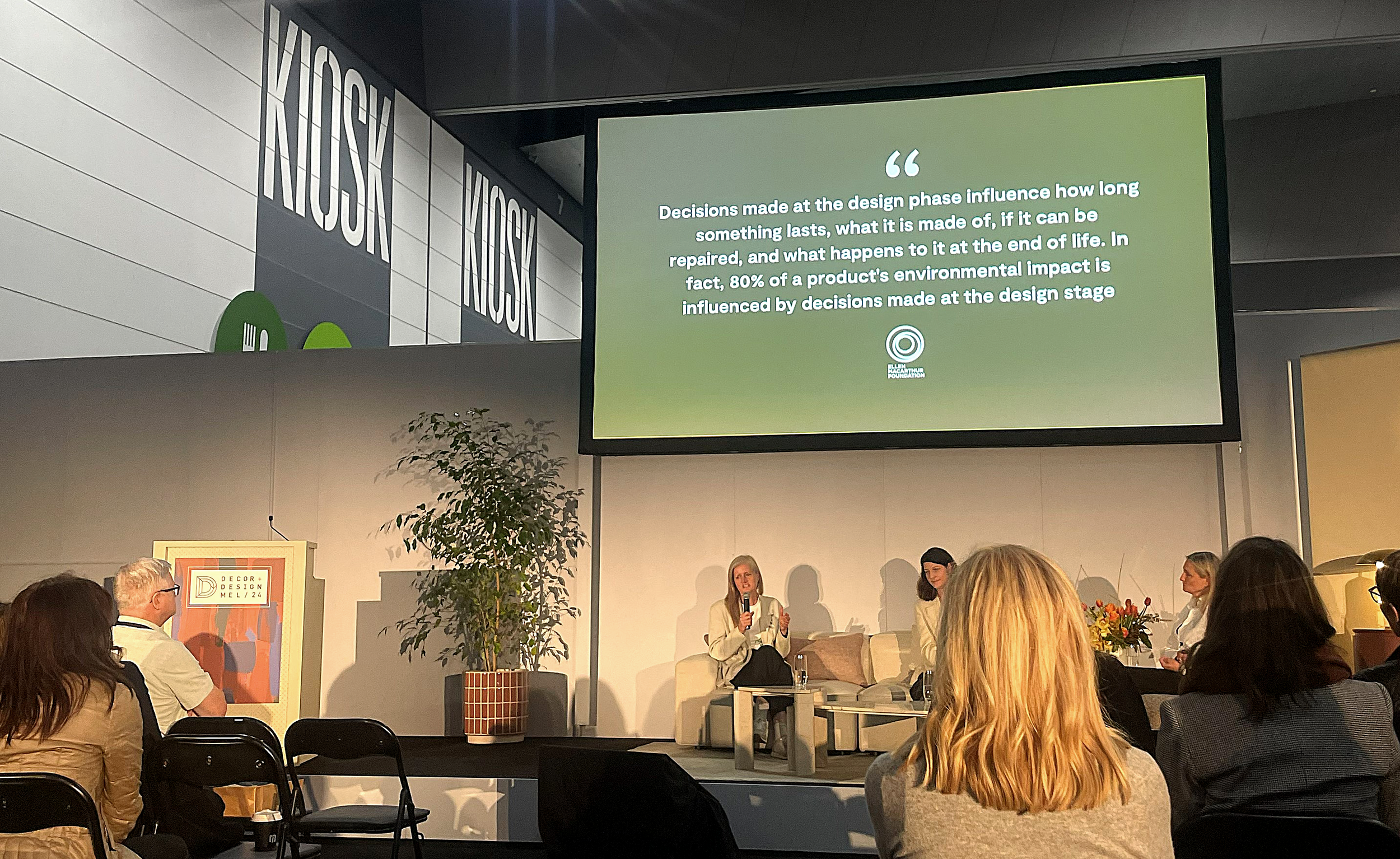
Three key learnings from the Green Design Show
Last week, Elyse and Hannah had the pleasure of attending the Green Design Show in Melbourne – a 3 day event focused on sustainability and ethical design, featuring dedicated talks and exhibitors showcasing innovative sustainable materials and practices in the industry. Here, Hannah writes about her three key learnings to apply to our design work.
At studiospillane, we naturally imbed sustainable and local practices into our work wherever and however we can. Championed by our team, we feel it is our duty to educate our clients in order to facilitate action and help them achieve their environmental objectives.
What I’ve come to understand is that we know a lot about sustainability and ethical design, but we need to be continually learning to make a difference in this space.
Knowing that our practices are ever evolving as we learn more, I challenged myself to come back from the Design Show with new and tangible solutions to expand my sustainable material, finishes and practices knowledge bank.
And I was not disappointed with what I found – of which these are my three key learnings:
1. Consider Social or “Human” Sustainability in our design process
Our understanding of environmental sustainability needs to expand more thoroughly to consider social or “human” sustainability. Libby Staggs with panellists Isabella Peppard, Katherine Featherstone and Karie Soehardi delivered an eye-opening presentation and discussion focused on modern slavery across the design industry and beyond. Libby delved into some of the red flags that designers can look out for when opening this dialogue with our suppliers. And furthermore, the questions we should be asking. The key aspects to look out for are transparency, risk management plans and actions for rectification. This process is not about shaming our suppliers - we’ve all got a part to play - and the only way they are going to know what the specifier cares about, and what is important to our clients, is if we tell them!
2. Rethink the way we look at waste
There are some truly incredible people and companies creating new ways to create sustainable finishes and rethink the way we look at ‘waste’. I was specifically impressed by the work of:
Revert - Mitchell Bell (recycling management and distribution company)
Critical - Rui Peng (no VOC recycled/circular plastic panels manufacturer)
Noveco (recycling material into gorgeous tiles)
Koskela - Sasha Titchkosky (research and implementation of sustainable finishes and materials in furniture)
Cultivated - Joshua Ellis (changing the game in circular economy of furniture).
I learnt that with a bit of creativity as designers in collaboration with these companies, we can create new design details for construction, ‘de-construction’ and reuse. This can service not only the aesthetic outcome but also our client’s long-term investment, and most importantly, the circular economy for our planet.
3. Sustainable tools and resources are on the way!
The Green Building Council of Australia (Taryn Cornell) is in the process of producing an interior fit-out guideline which serves as a framework to attain Green Star certification for a commercial fit-out. It also serves as a great checklist for designers to understand and implement sustainable practices independently. Keep an eye on the Green Building Council of Australia to see when this guideline drops.
Isabella Peppard, director of Product Aware, has created a product database that is populated by suppliers. The product profile helps determine which finishes and materials best align with your environmental and social impact ambitions. The profile covers 6 categories including General Info, Human Health, Climate & Ecosystem, Circular Economy, Waste Minimalisation and Social Responsibility. While this database is a great first port-of-call it is important that we follow through with suppliers to double check things like Material Safety Data sheets against the Red List, locations of manufacturing or where “recycled materials” actually come from. You can sign up to this database here to access the product catalogue or if you are a supplier, you can add your products.
When we know better, we can do better - but the hard work to implement these learnings in practice starts now. This space is constantly evolving and the more we can continue to learn and apply these learnings to our design work, the more sustainable our industry will become.







